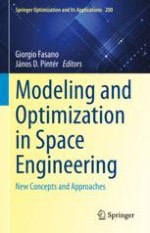2023 | OriginalPaper | Chapter
A Pareto Front Numerical Reconstruction Strategy Applied to a Satellite System Conceptual Design
Authors : Gustavo J. Santos, Sebastián M. Giusti, Roberto Alonso
Published in: Modeling and Optimization in Space Engineering
Publisher: Springer International Publishing
Activate our intelligent search to find suitable subject content or patents.
Select sections of text to find matching patents with Artificial Intelligence. powered by
Select sections of text to find additional relevant content using AI-assisted search. powered by
